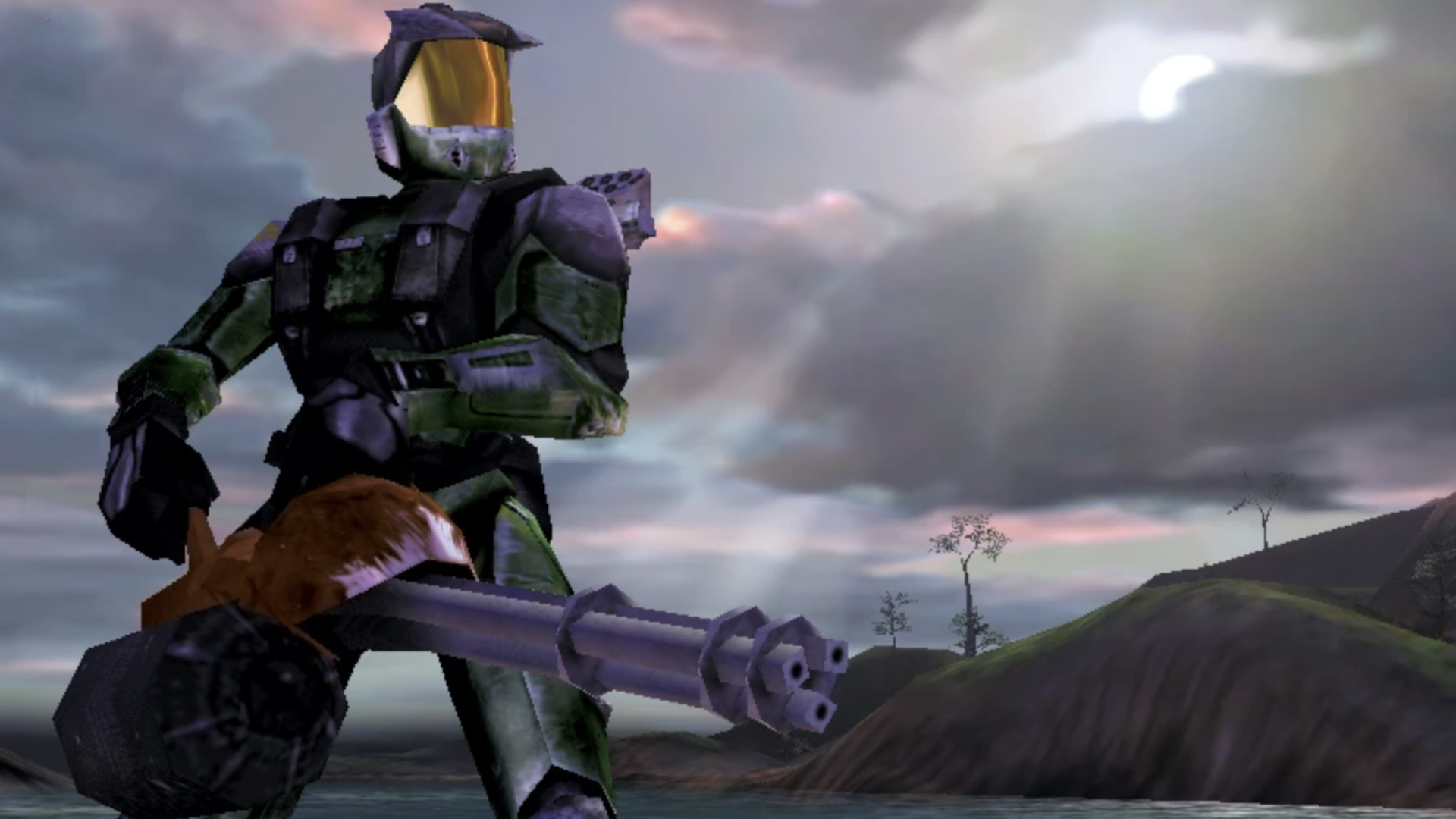PlayStation on Mac, Halo on Mac and three more broken gaming promises made at different Apple Events — what could have been done differently?
A 30-year streak of dropping the ball.

Video games! Once considered a topic fit only for playgrounds, now a conversation point that’s as common as talking about sports, movies, and the weather. Yet Apple has consistently stumbled when it comes to its own gaming ambitions — or lack thereof.
There’s a misconception that games have never been all that present on Apple’s products. That’s not true. As far back as the original Macintosh in 1984, games such as Mac Attack, a warzone-type game where you controlled a tank, as well as Grid Wars, a fast-paced puzzler are both fondly remembered. Heck, the two Steves, Jobs and Wozniak, even made a version of Breakout while briefly employed by Atari.
And the story only carried on from there. Take the early 90s, when you had iconic first-person shooters like DOOM — this came out on Apple’s computers less than a year after its PC debut, however unlikely that may seem given Mac gaming's relatively-sorry current state.
Games have always been around, but Apple has never truly committed to them — both in marketing and in-house development investment. When it has, there have usually been stumbles, or a lack of interest soon after the company shows its hand. Granted, there is now Apple Arcade, Apple’s gaming subscription service — although that's less likely to include games such as DOOM, and more likely to include whatever game Hello Kitty is currently featured in.
With this in mind, here are five moments from past Apple events that clearly showed the company having some roadmap-vision for gaming on its products, before abandoning it, leaving it to independent developers and apps like Whisky to pick up the slack.
Connectix VGS — 1999
Back in 1999, Apple had its eye on gaming and showcased this at two events that were held that same year. The first was at Macworld San Francisco, held on January 5, 1999. Elements of the keynote resonate strongly today, what with Apple’s recent rule change allowing retro gaming emulators to the App Store.
On stage, Apple CEO Steve Jobs announced Virtual Game Station (VGS), a Sony PlayStation emulator made by Connectix that worked on Mac. You would insert any game that you owned into the CD drive of a Mac, and the app would play the game just like a regular PlayStation console would. During the demo, games like Tomb Raider 3 and Crash Bandicoot 3 were being showcased — with Jobs and Head of Marketing Phil Schiller proclaiming how gaming had finally arrived on the Mac.
Master your iPhone in minutes
iMore offers spot-on advice and guidance from our team of experts, with decades of Apple device experience to lean on. Learn more with iMore!
VGS was released straight after the event when Macworld concluded, and it was all set to be a monster success. Yet this wouldn’t last long, with Sony filing a court lawsuit in October 2000 — explaining that the app was infringing on its patents involving the PlayStation, and an injunction was granted that halted any future sales.
Sony bought VGS soon after, and the app was essentially swept under the rug — especially as the console’s successor, the Sony PlayStation 2, launched around the same time. Apple has since stayed silent about this moment in time — but for a brief moment, it had a huge library of PlayStation games ready to play on a Mac. After this brief period though, any gaming announcements were few and far between — except for one later that very same year.
Halo on Mac - 1999
Apple was committed to another gaming venture in 1999 — yet, as with Connetix, it would also drop the ball once again. On July 21, 1999, at another Macworld event, Jobs revealed a then-third-person shooter that would come out the following year as an exclusive Mac title. You would control Master Chief, the main protagonist in the series, fighting against an alien race called the Covenant from taking over Earth. Sound familiar?
Yep, we're talking Halo.
At the same time, Microsoft was developing its home console, which would become the Xbox, and it needed a flagship title to show users that this was a serious foray into the gaming business. Halo would achieve that, which is why Bungie, the developer of the series, was bought by Microsoft almost a year after the Macworld debut. Halo was eventually released as a launch title for the Xbox in 2001, becoming a first-person shooter, pioneering the dual-analog control scheme which is still being used today, and becoming the flagship gaming franchise for Microsoft's console.
It’s since been reported that Jobs was planning for Apple to buy Bungie, but Microsoft got there first, and he was not pleased. Apple was too slow to realize the potential of the game, which is now a staple of the Xbox platform. Things could have been so different for Master Chief.
Minecraft Earth - 2019
Two years. That’s how long Minecraft Earth lasted — from its debut at WWDC 2019 to its retirement in June 2021. At first, the game looked and played great when using one of Apple’s best iPads at the time. You could collaborate with friends and family to help build your own Minecraft world thanks to augmented reality. As you held an iPad, you could walk around a table and freely view a castle or something else made in the game — meanwhile, someone else would be looking at a different part of the same structure from a totally different angle.
In its first week of release, Minecraft Earth was downloaded 1.4 million times on Apple’s devices. The game was a huge success — so what went wrong?
In fairness, the COVID-19 pandemic was mostly to blame. The game required collaboration across open spaces, something that lockdown restricted. Yet it could be argued that Apple could have helped with this in some way — perhaps with ways to upload your creations to the standard Minecraft game or turn Earth into a companion app until the pandemic subsided. It was game over in June 2021 regardless.
However, with Apple Vision Pro available, Minecraft Earth seems like a perfect fit for the spatial computing headset, due to its AR features and ability to show structures all around you. Maybe Apple will bring back a spatial version to rebalance the universe.
John Carmack
This is not about one game or single event, but more about the behind-the-scenes drama that John Carmack, co-creator of Doom, revealed in 2018.
You see, Carmack was a regular fixture at Apple events when gaming was discussed. He was present at MacWorld San Francisco in 1999, showcasing another FPS game for the Mac called Quake II. He would make further appearances at Macworld 2001 in Tokyo, showcasing DOOM 3 — yet you can see some slight discomfort from Jobs as he’s introducing Carmack to the stage.
In a Facebook post, Carmack remembers preparing for the Doom 3 demo. “When I was preparing an early technology demo of the gory Doom 3 for a keynote in Japan, I was having a hard time dealing with some of the managers involved,” he recalled.
“They were insisting that I change the demo because 'Steve doesn’t like blood.' I knew that Doom 3 wasn’t to his taste, but that wasn’t the point of doing the demo.” I brought it to Steve, with all the relevant people on the thread. He replied to everyone with: “I trust you John, do whatever you think is great.”
It was around this time that Carmack realized how Steve felt truly about games. “Steve didn’t think very highly of games, and always wished they weren’t as important to his platforms as they turned out to be.”
However Jobs felt about Doom 3, he was enthusiastic about what Carmack could bring to the Mac, yet that didn’t last. The post goes on to say how he released another title, Rage for iPhone, but heard nothing from Jobs — possibly due to Carmack’s frustration with the software development kit for iPhone in regards to gaming.
There hasn’t been a similar type of game since that has made an appearance at an Apple event — it’s more about Apple Arcade games today. It’s another example of Apple missing the point of other games that could have made the Mac even better.
Resident Evil 4 and Ray-Tracing - 2023
In 2023, Apple made sure to announce another series of commitments to gaming. Hideo Kojima, creator of the Metal Gear Solid and Death Stranding games, announced the latter for Mac at WWDC 2023.
A few months later when the iPhone 15 and iPhone 15 Pro lines were eventually announced, ray-tracing compatibility was touted heavily as a key feature of the new handsets. Gamers rejoiced, and companies such as CAPCOM made big accompanying announcements, like Resident Evil 4 Remake coming to the Mac, iPhone, and iPad during the iPhone 15 event. The thought of the newest Resident Evil game coming to a phone sounded impressive — until you actually played the game.
Running at a low 720p resolution, the game's performance was mediocre, suffering from lag — as you tried to aim at some of the enemies, you’d have to try again as it would stutter repeatedly. Everything looked too dark and grainy, too. Capcom would have made a better impression by releasing the original Resident Evil 4 from 2005.
At this same event, Ubisoft announced that Assassin’s Creed: Mirage, the thirteenth installment of the parkour-esque thief-action-adventure series, was coming to iPhone. It was, quite literally, only given a release date whilst this article was being written today, and now still sits many months away from its expected release window — and aeons after its initial release on consoles and PC.
Resident Evil 4 Remake was a great example of over-promising and under-delivering on iPhone 15, yet it carried on a near-30-year narrative of broken promises that real gaming — not just idle farmer apps, puzzlers and Wordle clones — had finally "arrived" on Apple’s devices. It might be best for the company to put the controller down, talk to third-party developers, and see what should be done to bolster a different set of games on Mac, iPad, Vision Pro, and iPhone.
More from iMore

Daryl is iMore's Features Editor, overseeing long-form and in-depth articles and op-eds. Daryl loves using his experience as both a journalist and Apple fan to tell stories about Apple's products and its community, from the apps we use every day to the products that have been long forgotten in the Cupertino archives.
Previously Software & Downloads Writer at TechRadar, and Deputy Editor at StealthOptional, he's also written a book, 'The Making of Tomb Raider', which tells the story of the beginnings of Lara Croft and the series' early development. His second book, '50 Years of Boss Fights', came out in June 2024, and has a monthly newsletter called 'Springboard'. He's also written for many other publications including WIRED, MacFormat, Bloody Disgusting, VGC, GamesRadar, Nintendo Life, VRV Blog, The Loop Magazine, SUPER JUMP, Gizmodo, Film Stories, TopTenReviews, Miketendo64, and Daily Star.
